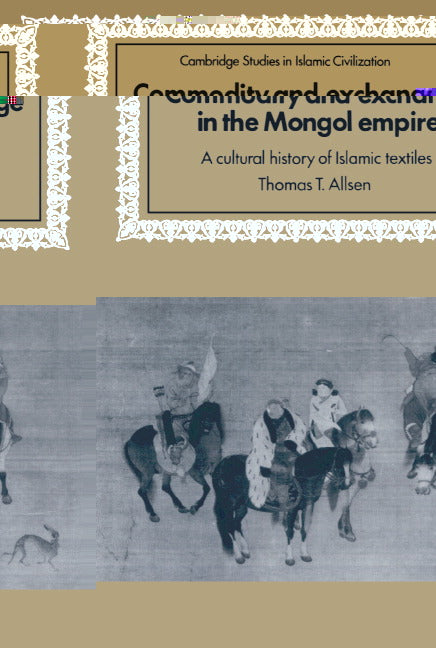Freshly Printed - allow 6 days lead
Couldn't load pickup availability
Commodity and Exchange in the Mongol Empire
A Cultural History of Islamic Textiles
In a fascinating account, the author considers the significance of cloth and colour in the political and cultural life of the Mongols.
Thomas T. Allsen (Author)
9780521583015, Cambridge University Press
Hardback, published 13 July 1997
156 pages
23.7 x 16 x 1.7 cm, 0.345 kg
'In its brief compass Allsen's book makes important contributions to the study of the Mongols, offering us not only specific new information but, more importantly, alternative ways to view the workings of the Mongol Empire and its impact on the regions it covered. Allsen has chosen an original subject and investigated it in his usual imaginative, practical, and meticulous fashion. The results are illuminating.' Journal of the Royal Asiatic Society
In the thirteenth century the Mongols created a vast, transcontinental empire that intensified commercial and cultural contact throughout Eurasia. From the outset of their expansion, the Mongols identified and mobilized artisans of diverse backgrounds, frequently transporting them from one cultural zone to another. Prominent among those transported were Muslim textile workers, resettled in China, where they made clothes for the imperial court. In a meticulous and fascinating account, the author investigates the significance of cloth and colour in the political and cultural life of the Mongols. Situated within the broader context of the history of the Silk Road, the primary line in East-West cultural communication during the pre-Muslim era, the study promises to be of interest not only to historians of the Middle East and Asia, but also to art historians and textile specialists.
1. Introduction
2. Consumption and use
3. Acquisition and production
4. Clothing and colour
5. Cultural transmission
6. Conclusion.
Subject Areas: Early history: c 500 to c 1450/1500 [HBLC], Asian history [HBJF]


